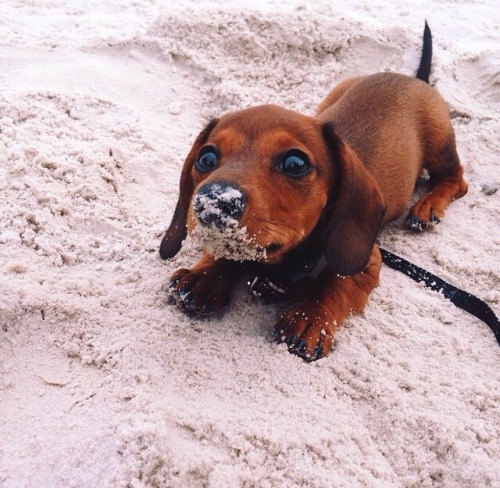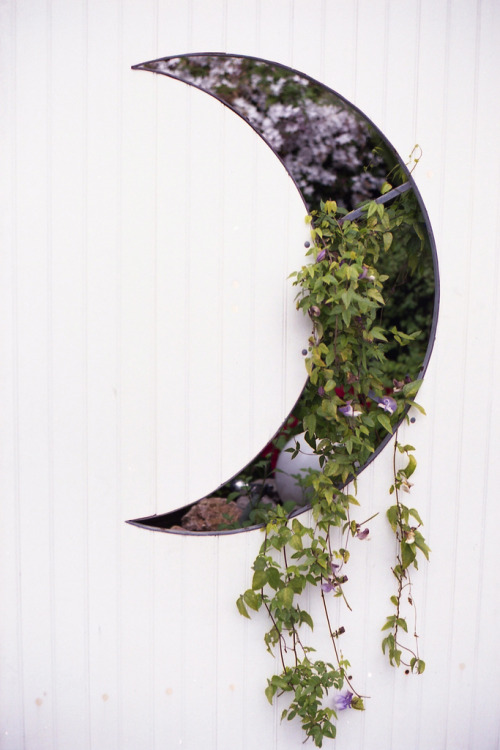The NASA “Worm” Logo
The NASA “Worm” Logo
Just like many organizations, the style and logos can change over time. You are probably most familiar with our “meatball” logo. No, unfortunately this does not refer to the delicious food. This logo (below) is our most popular symbol, and dates back to 1959.

But, we’ve also had other insignia that represented our organization throughout the years.
The “worm” logo (below) was used by the agency from 1975 until 1992. The organization wanted to create a more “modern” logo, which resulted in the unique type style of the “worm” logo.

Even though this logo was retired in 1992, the Graphics Standards Manual is still available online HERE.
You can also read up about the emblems, logos and insignia used by NASA throughout the years in a new e-Book available for free HERE.
Make sure to follow us on Tumblr for your regular dose of space:http://nasa.tumblr.com
More Posts from Lanas-own-blog and Others




Engineers are preparing to test the parachute system for NASA’s Orion spacecraft at the U.S. Army Yuma Proving Ground in Yuma, Arizona. During the test, planned for Wednesday, Aug. 26, a C-17 aircraft will carry a representative Orion capsule to 35,000 feet in altitude and then drop it from its cargo bay. Engineers will test a scenario in which one of Orion’s two drogue parachutes, used to stabilize it in the air, does not deploy, and one of its three main parachutes, used to slow the capsule during the final stage of descent, also does not deploy. The risky test will provide data engineers will use as they gear up to qualify Orion’s parachutes for missions with astronauts. On Aug. 24, a C-17 was loaded with the test version of Orion, which has a similar mass and interfaces with the parachutes as the Orion being developed for deep space missions but is shorter on top to fit inside the aircraft.


Incredible “EPIC” View Of The Moon Passing In Front Of The Earth
This is real, folks. It is not a computer-generated animation. NASA’s DSCOVR (Deep Space Climate Observatory) satellite took these incredible shots on July 16 using its Earth-facing EPIC camera from its vantage point between the Earth and the Sun, a million miles away!
DSCOVR sits at what’s known as the L1 Lagrangian point, where the gravitational pull of the Earth and Sun balance out in such a way that satellites positioned there can remain in stable orbit while using minimal energy:

Image: NASA/NOAA
This view of the far side of the Moon reminds us that it is anything but dark. The Moon is tidally locked, meaning that we see the same face all the time, but the sun regularly shines on the side that we don’t see (we’re just seeing a new or crescent moon when that happens). The far side also lacks the dark plains, or maria, that texture the Earth-facing side, made of basalt laid down by ancient lunar lava flows, reminding us that our lunar satellite has a complex geologic history:











How to stabilize a wobbly table?
You are in a restaurant and you find that your table wobbles. What do you do? Most people either put up with it, or they attempt to correct the problem by pushing a folded table napkin under one of the legs. But mathematicians can go one better. A couple of years ago, four mathematicians published a research paper in which they proved that if you rotate the table about its center, you will always find an orientation where the table is perfectly stable.
This problem - as a math problem - has been around since the 1960s, when a British mathematician called Roger Fenn first formulated it. In 1973, the famous math columnist Martin Gardner wrote about the problem in his Scientific American column, presenting a short, clever, intuitive argument to show how rotation will always stop the wobble. Here is that argument.
This only works for a table with equal legs, where the wobble is caused by an uneven floor. However uneven the floor, a table will always rest on at least three legs, even if one leg is in the air. Suppose the four corners are labeled A, B, C, D going clockwise round the table, and that leg A is in the air. If the floor were made of, say, sand, and you were to push down on legs A and B, leaving C and D fixed, then you could bring A into contact with the floor, but leg B would now extend into the sand. Okay so far?
Here comes the clever part. Since all four legs are equal, instead of pushing down on one side of the table, you could rotate the table clockwise through 90 degrees, keeping legs B, C and D flat on the ground, so that it ends up in the same position as when you pushed it down, except it would now be leg A that is pushed into the sand and legs B, C, and D are all resting on the floor. Since leg A begins in the air and ends up beneath the surface, while legs B, C, and D remain flat on the floor, at some point in the rotation leg A must have first come into contact with the ground. When it does, you have eliminated the wobble.The result follows from the Intermediate Value Theorem (Proof).
For more - VIDEO: Fix a Wobbly Table (with Math) by Numberphile.
Consider an interval I = [a, b] in the real numbers ℝ and a continuous function f : I → ℝ. Then, Version I. if u is a number between f(a) and f(b), f(a) < u < f(b) (or f(a) > u > f(b) ), then there is a c ∈ (a, b) such that f(c) = u.

This argument seems convincing, but making it mathematically precise turned out to be fairly hard. In fact, it took over 30 years to figure it out. The solution, presented in the paper Mathematical Table Turning Revisited, by Bill Baritompa, Rainer Loewen, Burkard Polster, and Marty Ross, is available online at Mathematical table turning revisited 19, Nov 2005, http://Arxiv.org/abs/math/0511490
The result follows from the Intermediate Value Theorem. But getting it to work proved much harder than some other equally cute, real-world applications of the IVT, such as the fact that at any moment in time, there is always at least one location on the earth’s surface where the temperature is exactly the same as at the location diametrically opposite on the other side of the globe. As the authors of the 2005 solution paper observe, “for arbitrary continuous ground functions, it appears just about impossible to turn [the] intuitive argument into a rigorous proof. In particular, it seems very difficult to suitably model the rotating action, so that the vertical distance of the hovering vertices depends continuously upon the rotation angle, and such that we can always be sure to finish in the end position.” The new proof works provided the ground never tilts more than 35 degrees. (If it did, your wine glass would probably fall over and the pasta would slide off your plate, so in practice this is not much of a limitation.) Is the theorem any use? Or is it one of those cases where the result might be unimportant but the math used to solve it has other, important applications?…… “I have to say that, other than the importance of the IVT itself, I can’t see any application other than fixing wobbly tables. Though I guess it does demonstrate that mathematicians do know their tables”- Mathematician Keith Devlin.
[SOURCE - MAA.org, K. Devlin, Feb. 2007]
[PDF] On the stability of four legged tables, A. Martin, 15 Aug. 2006: Proving that a perfect square table with four legs , place on continuous irregular ground with a local slope of at most 14.4 degrees and later 35 degrees, can be put into equilibrium on the ground by a “rotation” of less than 90 degrees. And Discussing the case of non-square tables and make the conjecture that equilibrium can be found if the four feet lie on a circle.
Also, I think we can add an actual argument: “The table would be stability (not wobble) if their four legs contact the ground - not necessarily that they have lie on the same flat surface ”, then everything will be easier to approach the problem that the authors wrote.



Pickering’s Triangle

-
 sweetbutterbliss liked this · 1 year ago
sweetbutterbliss liked this · 1 year ago -
 garuda606 liked this · 1 year ago
garuda606 liked this · 1 year ago -
 sewingtea liked this · 6 years ago
sewingtea liked this · 6 years ago -
 punk-void reblogged this · 6 years ago
punk-void reblogged this · 6 years ago -
 no-moon-at-all liked this · 7 years ago
no-moon-at-all liked this · 7 years ago -
 crowlamp liked this · 7 years ago
crowlamp liked this · 7 years ago -
 cynicxllyspeaking liked this · 7 years ago
cynicxllyspeaking liked this · 7 years ago -
 pathetickuroo liked this · 7 years ago
pathetickuroo liked this · 7 years ago -
 zacktastic liked this · 7 years ago
zacktastic liked this · 7 years ago -
 morgannn-ashley liked this · 7 years ago
morgannn-ashley liked this · 7 years ago -
 oliverneishdesign reblogged this · 7 years ago
oliverneishdesign reblogged this · 7 years ago -
 volcoff liked this · 7 years ago
volcoff liked this · 7 years ago -
 allofthe-lightsoff liked this · 7 years ago
allofthe-lightsoff liked this · 7 years ago -
 thekid-1921 liked this · 8 years ago
thekid-1921 liked this · 8 years ago -
 universumnow reblogged this · 8 years ago
universumnow reblogged this · 8 years ago -
 itsjustsunn liked this · 8 years ago
itsjustsunn liked this · 8 years ago -
 sunflxwerss liked this · 8 years ago
sunflxwerss liked this · 8 years ago -
 hemlockvarnish liked this · 8 years ago
hemlockvarnish liked this · 8 years ago -
 meganwestgate liked this · 8 years ago
meganwestgate liked this · 8 years ago -
 everythng-you-are reblogged this · 8 years ago
everythng-you-are reblogged this · 8 years ago -
 nikita-shu liked this · 8 years ago
nikita-shu liked this · 8 years ago -
 everythng-you-are liked this · 8 years ago
everythng-you-are liked this · 8 years ago -
 nessiedetka-blog liked this · 8 years ago
nessiedetka-blog liked this · 8 years ago -
 sundaymoringdiamonds liked this · 8 years ago
sundaymoringdiamonds liked this · 8 years ago -
 nes-useche liked this · 8 years ago
nes-useche liked this · 8 years ago -
 tiranosauriosrex liked this · 8 years ago
tiranosauriosrex liked this · 8 years ago -
 lemonbalmlesbian reblogged this · 8 years ago
lemonbalmlesbian reblogged this · 8 years ago -
 writer0-5-blog liked this · 8 years ago
writer0-5-blog liked this · 8 years ago -
 watdofak liked this · 9 years ago
watdofak liked this · 9 years ago -
 ew-rainbows liked this · 9 years ago
ew-rainbows liked this · 9 years ago -
 she-stole-my-soul reblogged this · 9 years ago
she-stole-my-soul reblogged this · 9 years ago -
 catlover264-blog liked this · 9 years ago
catlover264-blog liked this · 9 years ago -
 abrigaleee-blog liked this · 9 years ago
abrigaleee-blog liked this · 9 years ago -
 midmidwest reblogged this · 9 years ago
midmidwest reblogged this · 9 years ago -
 naturalizerr reblogged this · 9 years ago
naturalizerr reblogged this · 9 years ago -
 mio6166 reblogged this · 9 years ago
mio6166 reblogged this · 9 years ago -
 mio6166 liked this · 9 years ago
mio6166 liked this · 9 years ago
I've had lots of blogs in the past, but this one I'm actualy excited to share with people.
68 posts


